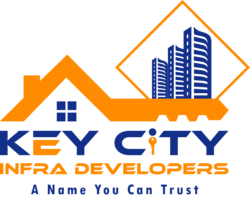Market Trends and Dynamics: Pay attention to how your competitors navigate market trends and dynamics. Observe their pricing strategies, property listings, and target demographics. Analyze which types of properties they focus on (e.g., residential, commercial, luxury) and how they adapt to changes in interest rates, housing inventory, or local economic conditions. Learning from their approach can help you anticipate market shifts and refine your own strategies accordingly.
Customer Preferences and Expectations: Study how your competitors engage with clients and meet their preferences and expectations. Examine their customer service practices, responsiveness to inquiries, and methods for showcasing properties (e.g., virtual tours, professional photography). Identify areas where competitors excel in client satisfaction and consider adopting similar practices to enhance your own customer experience.
Marketing and Branding Strategies: Analyze your competitors’ marketing campaigns, branding efforts, and online presence. Explore their use of digital marketing channels (e.g., social media, email marketing, SEO) and offline strategies (e.g., print advertising, direct mail). Note the tone and messaging they use to communicate their unique selling propositions (USPs) and differentiate themselves in the market. Incorporating successful elements of their marketing strategies can help amplify your visibility and attract prospective buyers or tenants.
Negotiation Techniques: Observe how your competitors negotiate property deals, handle objections, and close transactions. Pay attention to their negotiation tactics, flexibility in terms, and strategies for achieving win-win outcomes. Studying successful negotiation approaches can equip you with effective techniques to navigate competitive bidding situations, secure favorable terms, and build rapport with clients and counterparties.
Technological Integration: Evaluate how your competitors leverage technology to streamline real estate processes and enhance operational efficiency. Explore their use of property management software, CRM systems, or online platforms for listing management and transaction coordination. Adopting advanced technological tools and automation can help you streamline workflows, improve client communication, and stay ahead in a digitally-driven real estate market.

Networking and Partnerships: Learn from your competitors’ networking strategies and industry partnerships. Observe their involvement in local real estate associations, community events, or networking groups. Identify key industry players they collaborate with, such as lenders, contractors, or staging professionals. Building strategic alliances and expanding your network can create opportunities for referrals, joint ventures, and access to exclusive property listings.
Risk Management and Compliance: Assess how your competitors manage regulatory compliance, legal considerations, and risk mitigation in real estate transactions. Review their adherence to industry regulations, contract clauses, and property disclosures. Understand how they navigate potential risks, such as zoning issues, environmental concerns, or title disputes. Implementing robust risk management practices and staying informed about legal requirements can safeguard your transactions and enhance client trust.
Local Market Insights: Gain insights into your competitors’ knowledge of the local market landscape and neighborhood dynamics. Observe their expertise in specific geographic areas, understanding of property values, and awareness of upcoming developments or infrastructure projects. Monitoring their market research and insights can help you identify emerging opportunities, evaluate investment potential, and tailor your services to meet local market demands effectively.
Customer Feedback and Reputation Management: Study your competitors’ online reviews, client testimonials, and reputation within the community. Evaluate how they respond to feedback, address customer concerns, and maintain a positive brand image. Identify aspects of their customer service approach that resonate with clients and contribute to their reputation as trusted real estate professionals. Incorporating feedback-driven improvements and cultivating a strong reputation can bolster client loyalty and attract new business opportunities.
Continuous Learning and Adaptation: Recognize your competitors’ commitment to ongoing learning, professional development, and adaptation to industry trends. Observe their participation in real estate training programs, certifications, or continuing education courses. Assess their agility in adapting to technological advancements, market shifts, and consumer preferences. Embracing a culture of continuous learning and adaptation can equip you with the knowledge and skills needed to thrive in a competitive real estate market and position yourself as a trusted advisor to clients.





